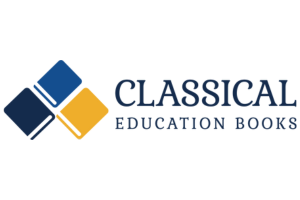Curriculum Spotlight – Science Through History

How do we know how things work? What are atoms and molecules? How do human organs function? Why are the sparkling lights in the sky?
These are questions that humans have been asking from the beginning of time, and we wanted answers. This science program tells us about those men and women who asked the questions and then proceeded to find answers to them. With a solidly Biblical beginning in, Science in the Beginning, we move on to Science in the Ancient World. The stories of Archimedes, Galen, and Hippocrates describe some of their first questions and how they were answered. Archimedes is the first person who recorded his observations of mathematics in space as well as things like water displacement, engineering in movement, and calculating volume. Galen observed the human body and how each part connected with the others. Hippocrates decided that fluids in the body influenced the emotions that we experience.
You may wonder, how is this relevant to our world today? What is scientific about these things? Science is something that is not settled, it’s actually constantly being discovered, tested, and changed. So how can we tell our children about this world of discovery? By reading the stories of the men and women who observed and wrote about their findings, we can show how our knowledge of the world in its minutest and grandest forms was discovered, but not always with a definite conclusion.
Aristotle, one of the greatest scientists and philosophers in history, believed that the Earth was the center of the universe. While we can learn so much from his work, we now know that he was wrong on this very important subject.
How can this program help our students to study and learn about science? As an elementary program, this is the story of how people came to believe what they did. Young children love to hear stories, and imagine them, and play them out. Rather than giving children dry facts of anatomy, astronomy, chemistry, and the other sciences, this program tells them the story of the discovery.
However, it’s not just a story. Each lesson also has an experiment. Again, as a course for elementary students, it’s a beautiful introduction to start the first books of the series with younger ages. The experiments are very basic and engaging, and even mind-blowing to 6- and 7-year-olds.
After those first basic discoveries, we move on, with the ages, and engage with the renaissance world as they build on the ideas first discovered. Galen told us so much about the human body, but he was not correct in everything. Leonardo da Vinci begins to show us more and we experiment with more complex materials. Copernicus and Galileo challenged Aristotle’s ideas about the universe and bravely published their works, showing us that even the most intelligent Aristotle could be wrong on some things.
This is the story of science. It’s a method: purpose, hypothesis, materials, procedure, results, conclusion. In telling our children about the brave men and women who were able to publish their conclusions to a world that might not accept them, we are raising up a generation of young people who can lead us into the next generation of scientific discovery.
Quick facts:
- This tells the story of science from the beginning of time including the people who presented their ideas.
- This is not just a story. Experiments accompany every story as the students are compelled to prove the theory.
- As an elementary program, it begins very basically and as they are more able to understand and build on discoveries, this program guides them.
- These books do not have to be done in order. Each text stands alone in content.
- Every lesson concludes with questions for the student. The questions are for three levels: youngest, older, oldest.
- This is an excellent program for a one-room schoolhouse approach. You can teach many ages with one text.
- The reading in each lesson is very manageable.
- Printable Notebook Pages are included and can be accessed through links in the product descriptions on our website. See sample.
5 Volumes – 180 lessons in each volume
Science in the Beginning
Science in the Ancient World
Science in the Scientific Revolution
Science in the Age of Reason
Science in the Industrial Age
Or buy the entire set for an excellent price: Science Through History.
Optional but Recommended Helps and Hints Resource
Helps and Hints for Science in the Beginning
Helps and Hints for Science in the Ancient World
Helps and Hints for Science in the Scientific Revolution
Helps and Hints for Science in the Age of Reason
Helps and Hints for Science in the Industrial Age
*You can purchase the text and helps and hints as a set or separately.
by Hester VanBraeden
Hester is a second-generation home-educating parent who is keenly aware that her own education is not complete, and comfortable that it probably never will be. She has many years of experience with children, books, and curriculum. She loves to travel to worlds and times beyond the present with her children through many books. Hester and her husband have four children and live in the lower mainland of BC.
